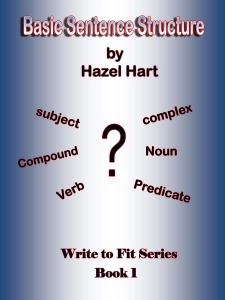The Reasons for Telling Why
Human beings are naturally curious about other people—either real or imaginary—and why they do what they do. Think about recent mass murders in Las Vegas and Texas. The question most of us ask is “Why?” We want to know what made a person do what they did.
“Why?” is asked about all kinds of behavior, not just in traumatic situations. We may ask why
- someone continues to work for a company he hates
- some people are hoarders
- a person who is obviously ill doesn’t go to a doctor
- a child misbehaves
- someone robs a bank
If you say your character robbed a bank to get money, you have given a surface reason. Many of us need money, but we don’t even think about robbing a bank to get it, so why does your character? What is in his or her background that makes illegal activity an attractive option? Surface answers explain current behavior, but you must look for deeper reasons, go beneath the skin of the situation, to the heart and guts of the matter if you want to satisfy your audience.
Getting to Your Character’s Inner Self
You may be thinking you don’t have time to fill out one of those lengthy character profile forms. The good news is that it isn’t necessary to know every detail about your character’s past. You only need to know—and feel—those past events that are driving his actions in the story. To get to them, use the shortcut of the character interview. Imagine you are your character’s best friend, psychiatrist, or some other caring person, make a list of three or four relevant questions to ask about his or her behavior, find a comfortable spot for your talk, maybe have a coffee or other beverage, and get to know what makes your character behave in questionable ways.
Sample Questions
These questions are just to get you started. Fill in the blanks with events or actions relevant to the character’s action in the story.
- Why is ___ so important to you?
- When did you first realize ___ was necessary to your success or wellbeing?
- What was your first (or last) experience with ____? How old were you? Who was with you? How did you feel? What did that experience teach you about life?
- What is your greatest fear and what happened to cause that fear?
- Who taught you about ____?
Additional sample questions
- What do you believe to be true about yourself and the world? How and when was that belief formed? At what age? Who was there? What happened that left an emotional mark? How does that mark show itself in the character’s current story?
- What secret do you keep and why? What would happen if others found out your secret?
- Is there anything you regret not doing? What is it? Why do you regret your lack of action?
- Is success even possible for you?
- Is love possible or something you will never have?
- What is the worst thing that ever happened to you? Where did it happen? How old were you? Who was there? What was said? How did you feel at the time? How did you feel later? What did you learn about life from it? How does it affect your beliefs about yourself and how you should behave in your current situation?
Recording the Character Interview
Writing out the answers is the traditional way, but you don’t have to be traditional. You can make a voice recording in which you act as both interviewer and character, or you can make a video. You might even get a friend to ask the questions so you can concentrate on being the character.
If you are both the interviewer and the character, do not answer the questions from the writer mind, but from the character mind. Once the question is asked, you are an actor playing a part, sinking into your character’s heart and mind and answering the questions from that place of being.
The Benefits of Interviewing Characters
The interview is a quick way of learning what motivates the people in your stories. It helps make them real for you and for your readers. Try it, and let me know how it works for you.




